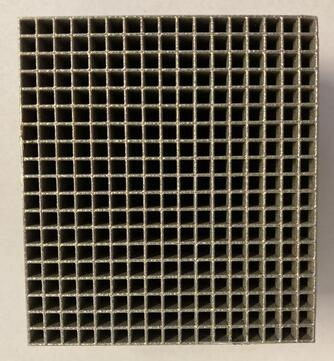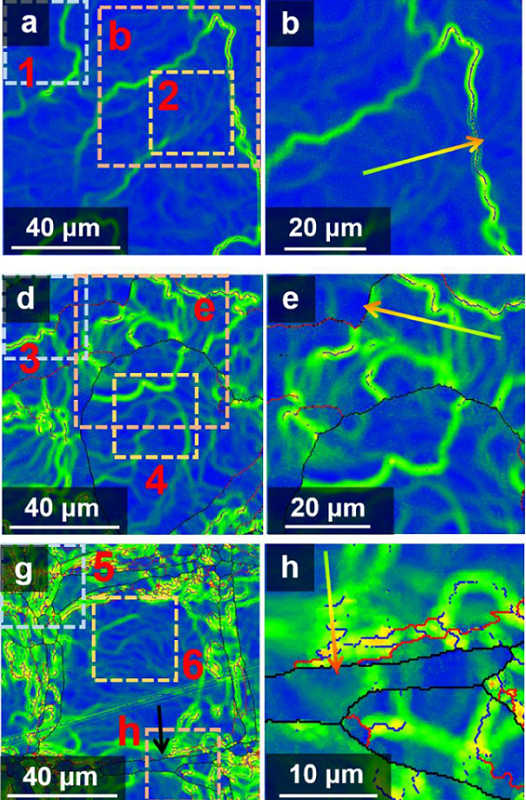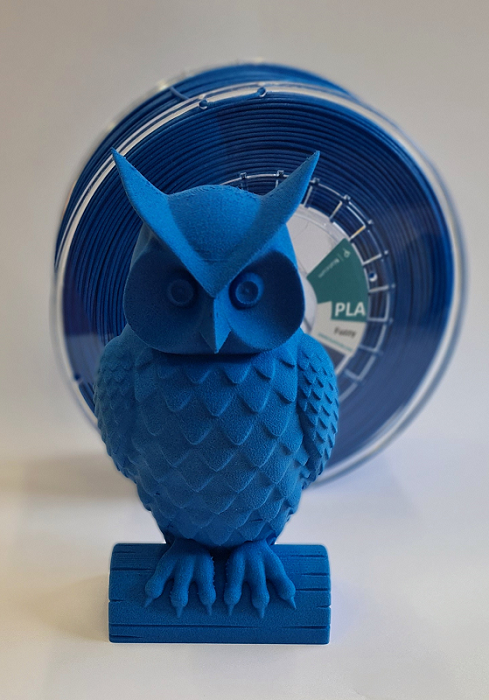We’re starting with a 3D printed part for the nuclear powder industry in today’s 3D Printing News Briefs. Then we’ll move on to two separate research projects, before ending with a fun new material.
Westinghouse 3D Prints Fuel Debris Filter For Nuclear Plants
 StrongHold AM
StrongHold AMWestinghouse Electric Sweden AB turned to 3D printing to improve the operational reliability in two Nordic Boiling Water Reactor (BWR) units, one in Finland and one in Sweden. The company fabricated and installed the StrongHold AM nuclear fuel debris filter in the units, which it has called an industry first. Operations at these nuclear plants can be temporarily suspended when fuel damages occur, which costs time and money. Together with plant operators Teollisuuden Voima Oyj (TVO) and OKG, Westinghouse 3D printed the filters, which offer improved capture capabilities to keep debris from getting into the fuel assembly and damaging the cladding.
“We can now gain important practical experience in the use of 3D-printed metal products which will become an ever more important operational solution going forward,” said Arttu Knuutila, TVO Fuel Procurement Team Leader. “It is important to have a strong network of partners like Westinghouse who deploy additive manufacturing to drive enhanced capability.”
Researchers Using SLM to 3D Print Single Crystal Nickel
 Kernel average misorientation (KAM) maps of the flat-top built 3D printed Ni specimens. Image via Kyushu University.
Kernel average misorientation (KAM) maps of the flat-top built 3D printed Ni specimens. Image via Kyushu University.A team of researchers from Japan’s National Institute for Materials Science, Kyushu University, and Osaka University published a paper about their work using SLM to 3D print single crystal structures made of pure nickel. High-temperature 3D printed Ni-based superalloys, like Inconel, are increasingly in demand, especially in the aerospace sector, and while single crystal turbine blades can operate at much higher temperatures than crystalline ones, they can’t be processed with laser-based AM without a single crystal seed (build plate). These researchers didn’t require a seed, as they used a flat-top laser profile to 3D print single crystal Ni.
With all the parameters to contend with in SLM and its high thermal gradient, high strain and dislocation densities can occur, causing internal dynamic crystallization and new grains. The researchers said that the scan strategy needs to improve to enable more precise microstructure control, but that there hadn’t been any studies on flat-top beam profiles for this purpose until now. An SLM 280 HL from SLM Solutions was used to print Ni structures in an argon environment, and the behavior of single flat-top laser tracks was examined with polycrystalline Ni plates, so the team could estimate the shape of the resulting melt pools. They optimized the planar melt pool to 3D print a homogenous single crystal structure of pure Ni, without having to use a single crystal build plate.
Researchers Looking at Thermal Properties of 3D Printed Walls
 Stand with the additive wall panel. (a) The sample is placed in a climate chamber No. 1.; (b) The sample is placed between two climatic chambers, the start of testing. Image Credit: Nemova, D et al., Energies
Stand with the additive wall panel. (a) The sample is placed in a climate chamber No. 1.; (b) The sample is placed between two climatic chambers, the start of testing. Image Credit: Nemova, D et al., EnergiesAnother team of researchers, this time from Peter the Great St. Petersburg Polytechnic University, published a paper on their assessment and evaluation of the thermal properties of 3D printed walls. They explain that using 3D printed concrete (3DPC) with a modular building system can offer more sustainable solutions, as well as decrease energy consumption and increase thermal comfort, and the team decided to investigate the overall energy efficiency and suitability of 3D printed enclosing structures (walls) to find the optimal configuration with the beset thermal characteristics. They 3D printed a 390 × 680 × 310 mm wall panel, with 35 mm thickness, and conducted all sorts of tests and measurements to determine the 3D printed structure’s heat transfer resistance. They also used a computation fluid dynamics (CFD) program by ANSYS CFX to investigate the heat convection and conduction in the 3D printed wall.
“This work investigates and develops energy-efficient 3D-printable walls that can be implemented worldwide through energy efficiency and sustainability criteria. Numerical research and experimental investigations, bench tests with software packages, and high-precision modern equipment have been used to investigate the thermal performance of 3DPC envelopes with different types of configurations, arrangements of materials, and types of insulation. The research findings showed that an innovative energy-efficient ventilated 3DPC envelope with a low thermal conductivity coefficient was developed following the climatic zone. The annual costs of heat energy consumed for heating and carbon footprint were determined in the software package Revit Insight to assess the energy efficiency of the 3D-printed building. The thermal properties of the main wall body of the tested 3D-printed walls were calculated with on-site monitoring data. The infrared thermography technique detected heterogeneous and non-uniform temperature distributions on the exterior wall surface of the 3DPC tested envelopes,” the researchers wrote in the abstract.
Filaticum Adds PLA-Based Fuzzy Filament
Finally, Hungary-based industrial filament manufacturer and provider Filaticum, founded in 2015, has introduced its newest material development: Filaticum Fuzzy, for 3D printing unique objects with a distinct, special surface. This addition to its material portfolio is PLA-based, which means that even though your prints will be fuzzy, PLA print settings can be used as a baseline when you use this filament. Users can vary the print temperature between 200 and 240°C to modify the surface texture, and a surface with “craters” can be printed with a lower flow.
Filaticum Fuzzy has some particular characteristics, which mean that the typical FDM layers are blurred almost to disappearance, and a fuzzy, fluffy surface forms over them instead, without having to set a special printing skin. The composite filament demonstrated high impact resistance, a better Z-axis adhesion in comparison to standard PLA, and can also be post-processed well. You can purchase a 750 gram Fuzzy spool for €28.5, including VAT, in blue, green, black, red, and yellow.
Subscribe to Our Email Newsletter
Stay up-to-date on all the latest news from the 3D printing industry and receive information and offers from third party vendors.
You May Also Like
3D Printing Webinar and Event Roundup: April 28, 2024
In this week’s 3D Printing Webinar and Event Roundup, the Ceramics Expo is taking place in Michigan, Stratasys continues its advanced training courses, and SPE is holding a Polymer Characterization...
Initial Speakers and Sponsors Announced for Additive Manufacturing Strategies 2025
Nearly a year away from the event, the Additive Manufacturing Strategies (AMS) 2025 conference is already beginning to take shape. Building upon the success of 2024’s summit, AMS has established...
HP & INDO-MIM Collaborate to Boost Metal 3D Printing in India
HP Inc. and INDO-MIM, a US- and India-based supplier of metal injection molding (MIM) powders and contract manufacturer, have announced that the two companies will collaborate to accelerate additive manufacturing...
One of US’s Largest Machine Tool Resellers to Offer Stratasys 3D Printing
In a key move for the additive manufacturing (AM) stalwart, Stratasys (Nasdaq: SSYS) has announced a strategic partnership with Select Additive Technologies, a division of Morris Group, Inc., which is...

































